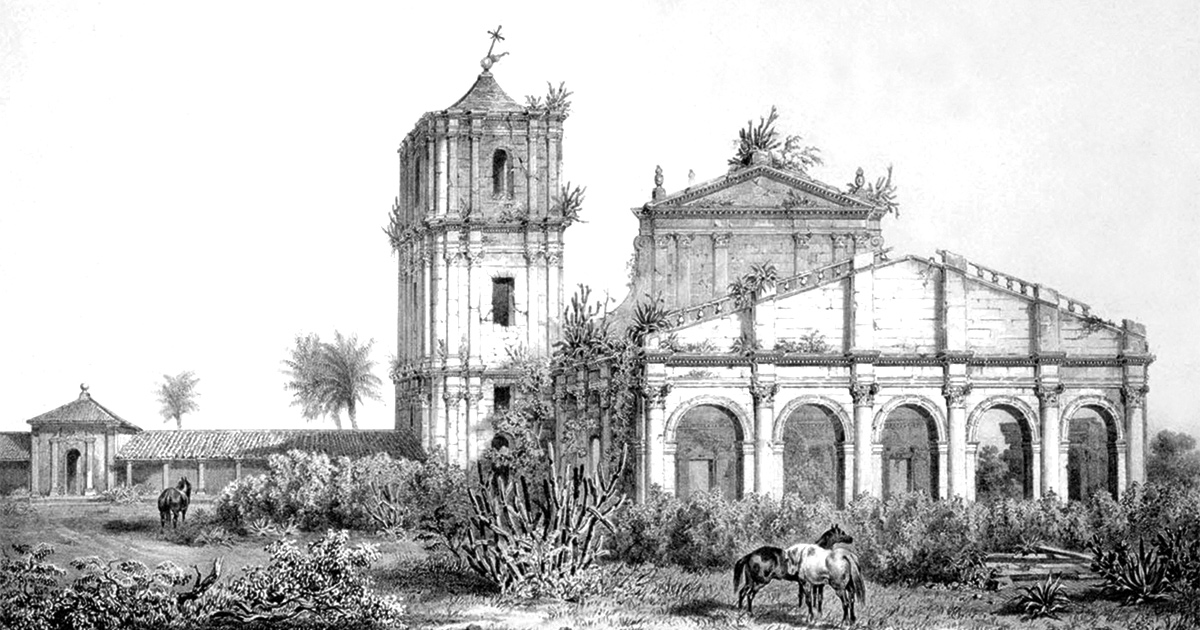In the early eighteenth century, in the villages of the Jesuit Missions scattered across the Río de la Plata Basin, a territory currently shared by Brazil, Argentina, and Paraguay, Jesuit Buenaventura Suárez (1679–1750) took a keen interest in celestial phenomena but faced difficulties becoming an astronomer. Since the Society of Jesus, in Spain, did not supply measurement and observation equipment, he built his own telescopes and made observations considered reliable by experts at European scientific centers equipped with much more sophisticated equipment.
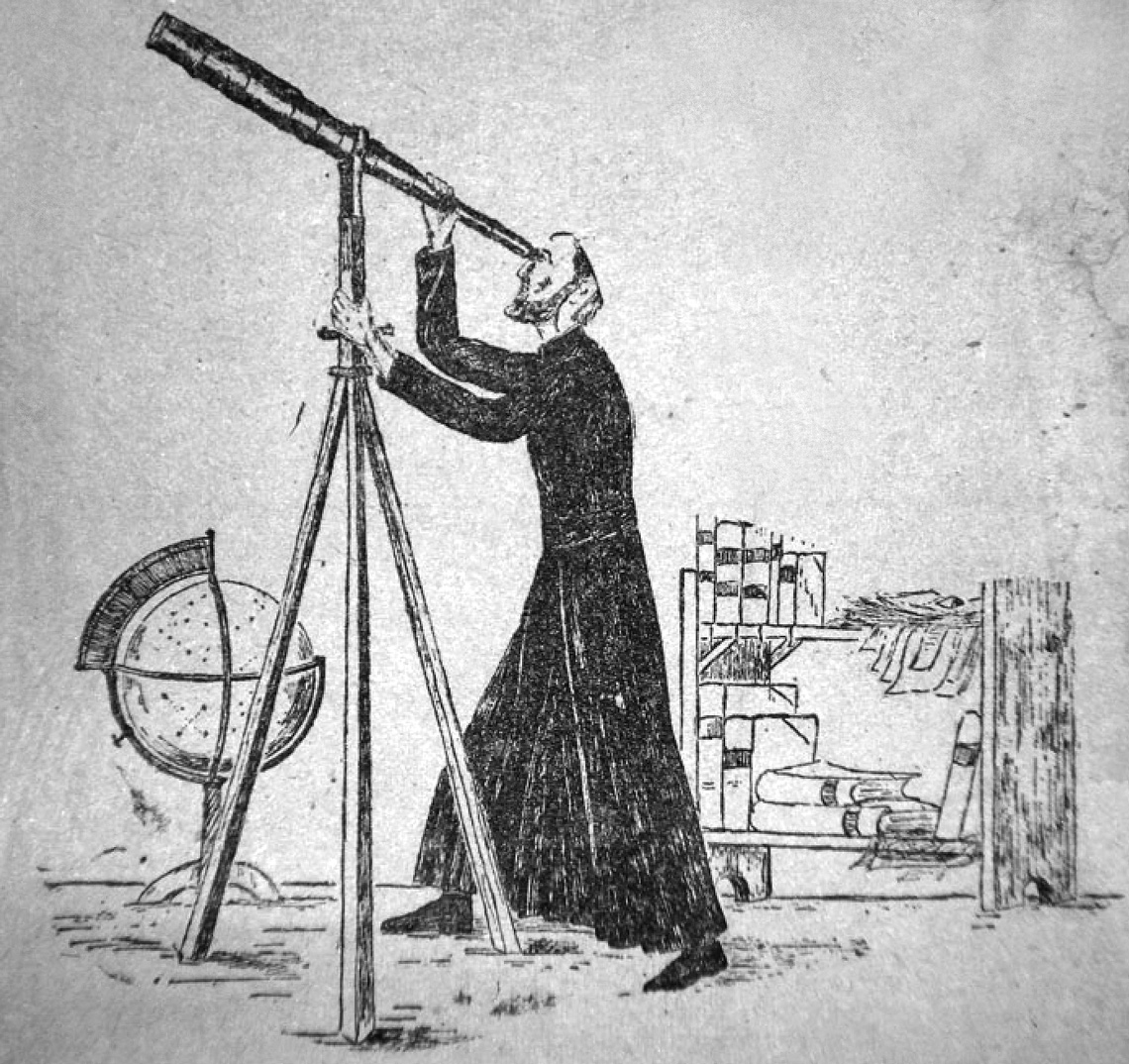
MissionesOnLineIlustración anónima de Buenaventura SuárezMissionesOnLine
Suárez was of the region’s criollo elite, son of the great-granddaughter of Spanish conquistador Juan de Garay (1528–1583), founder of Santa Fe, now in Argentina, where he was born. He studied at the city’s Jesuit high school, joined the Society of Jesus at 16, and then enrolled in the University of Córdoba, also in Argentina. At the time, as well as devoting himself to philosophy and theology, he took an interest in exact sciences and became a self-taught mathematician and astronomer.
He observed the first lunar eclipse with the naked eye in 1700, in Corrientes, near the Argentina-Paraguay border. Ordained a priest in 1704, Suárez traveled to the Jesuit missions among the Guaraní people. The 30 missions occupied an area that currently corresponds to southern Paraguay, the Argentine province of Misiones, and the western portion of the state of Rio Grande do Sul.
The Jesuit astronomer built his home base in San Cosme y Damián, in what is currently Paraguay, and observed lunar and solar events at the missions for nearly five decades. “His scientific work served the Missions’ interests, for example, by establishing the dates of movable feasts on the calendar, such as Easter,” says science historian Miguel de Asúa, of the National University of General San Martín, in Argentina. “Suárez’s astronomy had a religious purpose and contributed to the process of spreading Christianity.”
In San Miguel Arcanjo, currently the municipality of São Miguel das Missões in Rio Grande do Sul, Suárez recorded two lunar eclipses, one in 1728 and the other, with a 3-meter refracting telescope (simple technology, with two convex lenses), in 1747. That same year and with the same telescope, at the Santa Maria la Mayor mission, in what is currently Argentina, he observed another lunar eclipse. The 1747 records were published in Philosophical Transactions, the scientific journal of the Royal Society, a UK scientific academy, in 1749 and 1750.
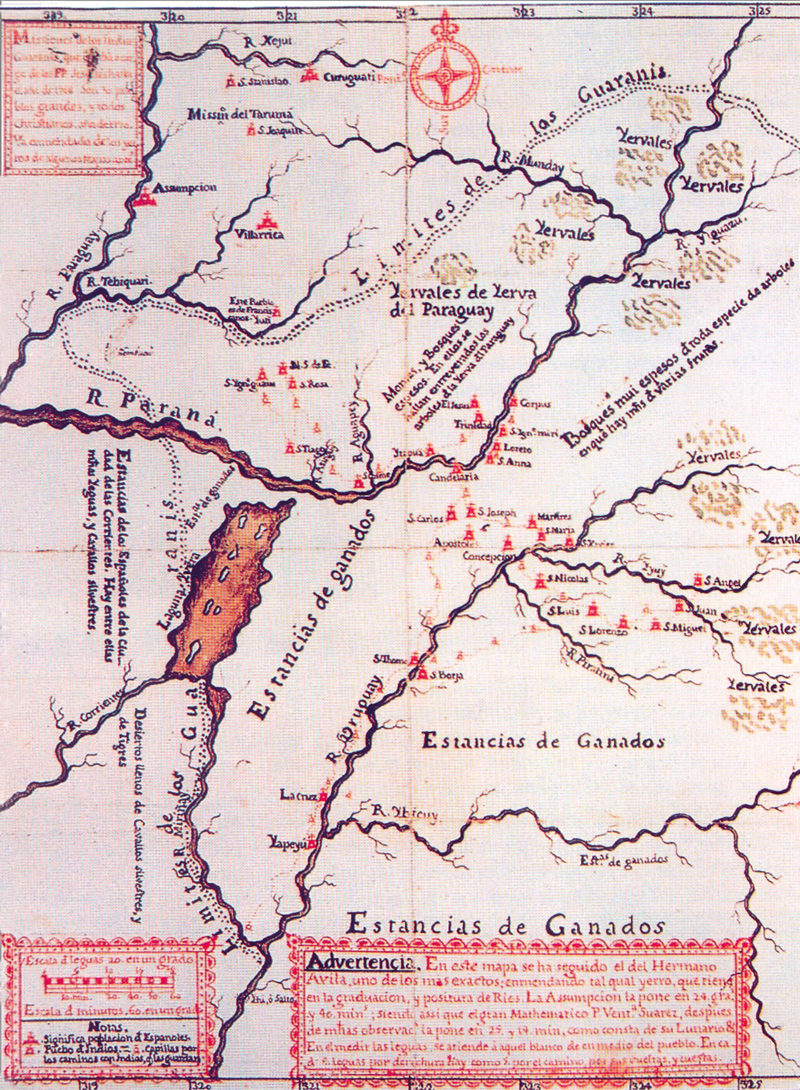
Arquivo Geral de SimancasMap of the Guaraní Missions run by the Jesuits in 1768, referencing Suárez’s dataArquivo Geral de Simancas
More important are his systematic observations of Jupiter’s four largest moons, discovered by the Italian mathematician Galileu Galilei (1564–1642) and already widely known by the eighteenth century. With a clock adjusted to the sun’s position, observed using a solar quadrant, a rudimentary astronomical instrument, the Jovial eclipse measurement, obtained using a method developed by Galileu himself, was used to find the difference in longitude between the observation site and a reference site on the globe with a known longitude, which is currently the Greenwich meridian, in London. “Suárez used the most precise, yet feasible method available to him at the time,” acknowledges astrophysicist Oscar Matsuura, retired professor at the University of São Paulo and organizer of the book História da astronomia no Brasil (History of astronomy in Brazil; CEPE, 2014).
Over the 13 years he lived in San Cosme, the Jesuit observed 147 eclipses of Jupiter’s satellites and used this information to establish the longitude of all 30 missions. Swedish astronomer Pehr Wilhelm Wargentin (1717–1783) used data collected by Suárez in his 1748 article about the moon lo, the innermost of Jupiter’s Galilean satellites
His knowledge of mathematics also helped him prepare lunariums — ompendia of astronomical predictions such as moon phases and solar and lunar eclipses. “The lunarium was important for organizing life on the missions,” says Argentine historian Carlos Daniel Paz, of the University of Vale do Rio dos Sinos (UNISINOS), in São Leopoldo, Rio Grande do Sul. “It was a way to organize time in the missions and better manage agriculture cycles.”
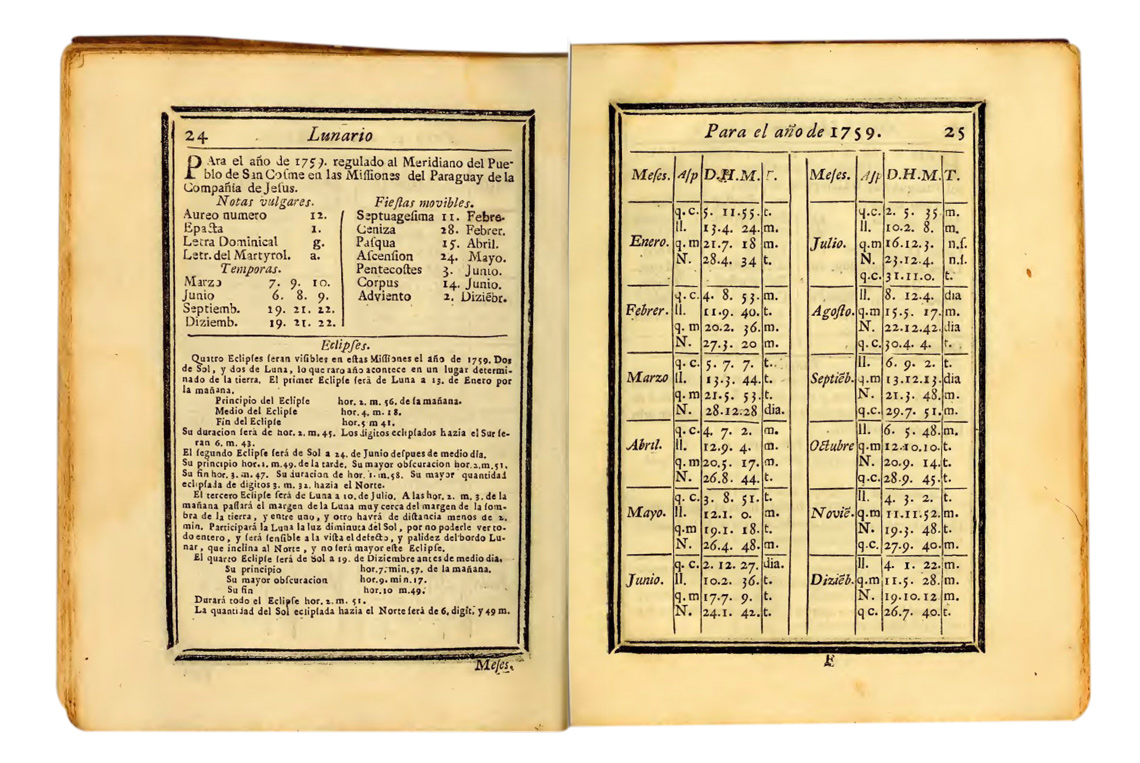
OpenlibraryLunarium tables predicting moon phases and lunar and solar eclipses from January of 1740 to December of 1841Openlibrary
Predictions related to eclipses, moon phases, and movable feast dates every year for the next 100 years were compiled in the book Lunario de um siglo (A century’s lunarium), published in Lisbon in 1740. In the introduction, he laments that the Missions lacked astronomical observation instruments because “the study of mathematical sciences was not flourishing [in these provinces].” Brazilian historian Maria Cristina Bohn Martins, of UNISINOS, confirms: “Contrary to what one might imagine, the Missions were not rich and imported only what was essential. Scientific books and instruments were quite expensive and took months to arrive.”
He built his telescope in the Missions with what he had on hand. “The Jesuits were excellent craftsmen and usually had specialized workshops,” says German historian Karl Heinz Arenz, of the Federal University of Pará (UFPA). According to him, the missionaries tried to produce everything they needed while at the missions, such as agricultural and cooking equipment and musical instruments. “Glass of sufficient quality to produce telescope lenses was hard to come by, because it had to be purchased via Buenos Aires or Asunción,” clarifies historian Artur Henrique Barcelos, of the Federal University of Rio Grande (UFRG), in Rio Grande do Sul.
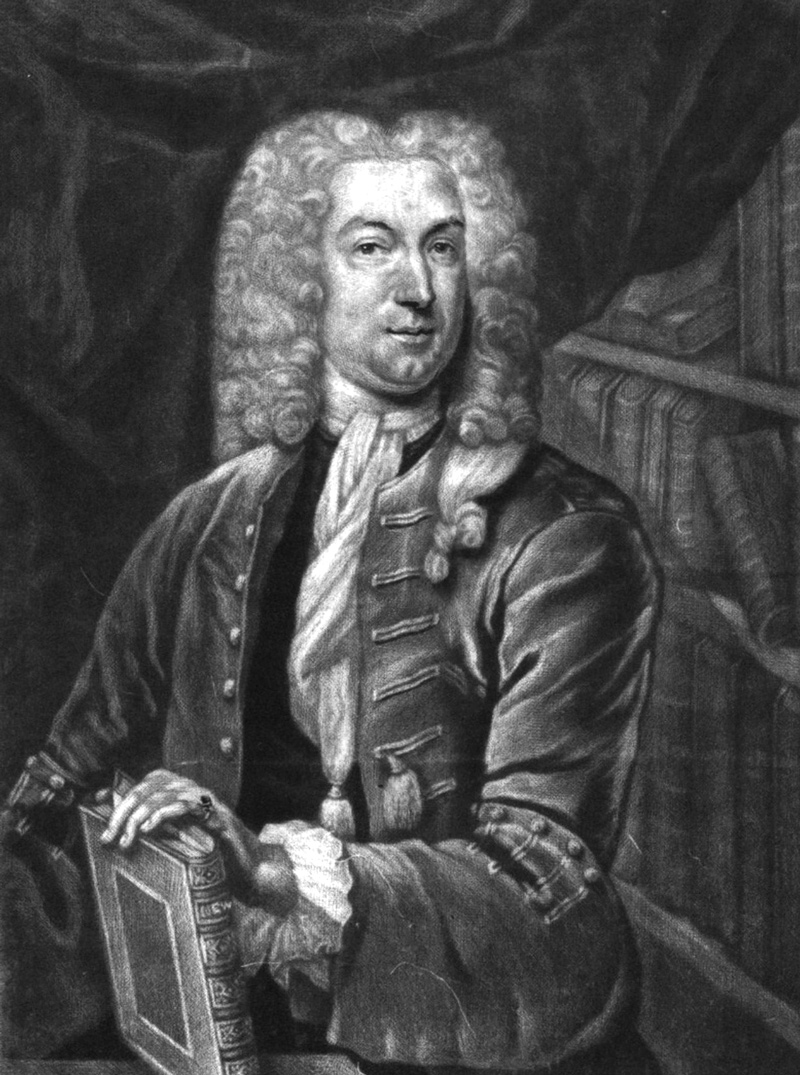
Biblioteca Nacional de Portugal / Wikimedia CommonsPortuguese physician Jacob Sarmento, who read the Argentine Jesuit’s works at Royal Society conferencesBiblioteca Nacional de Portugal / Wikimedia Commons
He most likely built the lenses from local materials. Quartz crystals were abundant in the Paraguayan Chaco, and with their knowledge of rocks, the indigenous people could have provided Suárez with very transparent crystals that, when carefully polished, could replace glass lenses. Argentine historian Guillermo Furlong (1889–1974), who conducted the first official historical research on Suárez, found documents describing the instruments used to manufacture lenses in the São Borja mission, in what is currently Rio Grande do Sul, shortly after the Jesuits were expelled from the Spanish colonies in 1767.
Building the tube — or body — of the telescope was less complicated, since, according to Barcelos, the indigenous people were remarkably skilled in woodworking and carpentry. Even the largest telescopes may have been made from wood or metal. In some missions, Suárez and the indigenous people melted down bells and made musical instruments, such as organ pipes. “Many Jesuit chronicles highlight the Guaraní people’s ability to make clocks and astrolabes like the Europeans,” reports Asúa. Spurred on by Suárez’s pursuits in astronomy, the Missions produced sundials, mechanical clocks, terrestrial and celestial globes, all lost after the Jesuits were expelled from Spanish land in 1767.
Suárez and the Guaraní people built eight telescopes, ranging in length from 2.3 m to 9 m. A flat base and a prominent position, such as a tower, were needed to operate the instruments. He made observations from the Asunción church tower, but there are no documents describing how he secured and operated the instruments. “The actual mechanical assembly of a telescope is no trivial matter,” says Matsuura.
Global network of astronomers
To build the telescopes, Suárez relied on information circulated through letters exchanged among Jesuits and astronomers around the world. “The clergyman corresponded with astronomers from the Americas and Europe,” says Asúa. According to the researcher, the Jesuit exchanged letters, for example, with Peruvian mathematician Pedro Peralta y Barnuevo (1663–1743) in Lima, Peru, and German Jesuit Nicasius Grammatici (1684–1736) in Bavaria and later China. Wargentin obtained Suárez’s data about Jupiter’s moons from fellow Swede Anders Celsius (1701–1744), who, in turn, received the results of Suárez’s observations made in the Missions from Grammatici. Celsius became best known for having created the centigrade scale for temperatures, which bears his name. Suárez, on the other hand, received from Grammatici both longitude data and the results of his astronomical observations, which were important for establishing, by comparison, the longitude of the Guaraní missions.
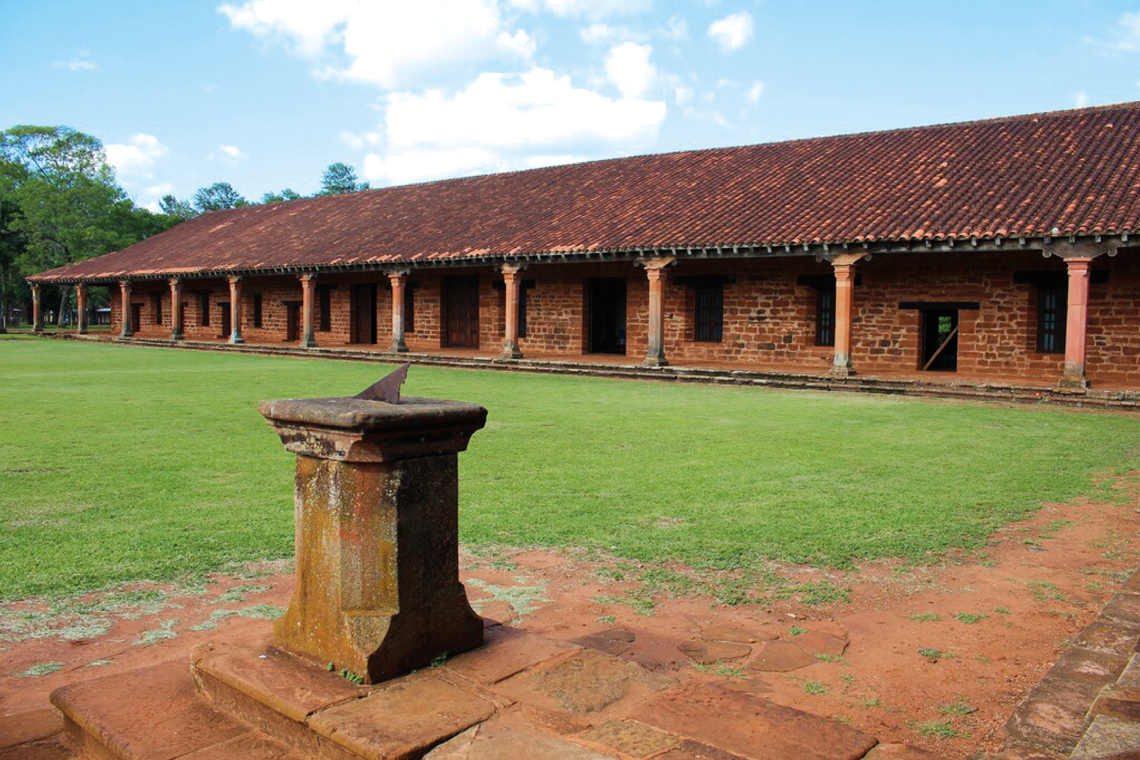
YguamoringaSundial built by Suárez in San Cosme y Damián, in Paraguay, alongside a close-upYguamoringa
The Jesuit produced a Spanish translation of the book Theorica verdadeira das marés (True tidal theory), published in London in 1737. The author is Jacob de Castro Sarmento (1692–1762), a Portuguese physician of Jewish descent and one of the first to introduce Newtonian physics in Lisbon, before fleeing anti-Semitism and becoming a member of the Royal Society in London. It was Sarmento who read Suárez’s observations at scientific conferences and paved the way for the Jesuit to publish his work in various issues of Philosophical Transactions. Sarmento was sent the data from Rio de Janeiro physician Mateus Saraiva (?–?), also a member of the Royal Society with an interest in astronomy, with whom the Jesuit corresponded.
The translation also indicates that Suárez went beyond the pragmatic aspect of astronomy, such as making calendars for religious activities. It is also quite intriguing, because the Society of Jesus was not very open to theoretical novelties — Newtonian mechanics was not yet accepted or taught.
“Jesuit education for the indigenous peoples was scholastic, focusing on old and established content, but among the clerics, curiosity was permitted in order to learn about novelties and to debate them,” says Matsuura. “It was normal that some would embrace the novelties and even defend them publicly, while others would not.” For example, he cites the Portuguese mathematician and astronomer José Monteiro da Rocha (1734–1819), educated by the Jesuits in Bahia, who used Newtonian theory in his text Sistema físico-matemático dos cometas (Mathematical-physical system of comets), from 1759.
Suárez was neither the first astronomer nor the first Jesuit to pursue astronomy in South America. Since the seventeenth century, astronomers, mainly Jesuits, have been recording observations for cartographic purposes throughout the continent, especially in the Amazon. But he was the first individual born in the Americas who produced astronomical knowledge relevant to the nascent modern science, using his own methods and building his own instruments. “His story is important for understanding that South America was not a mere accessory in the production of knowledge in the eighteenth century,” Paz concludes.
Republish
